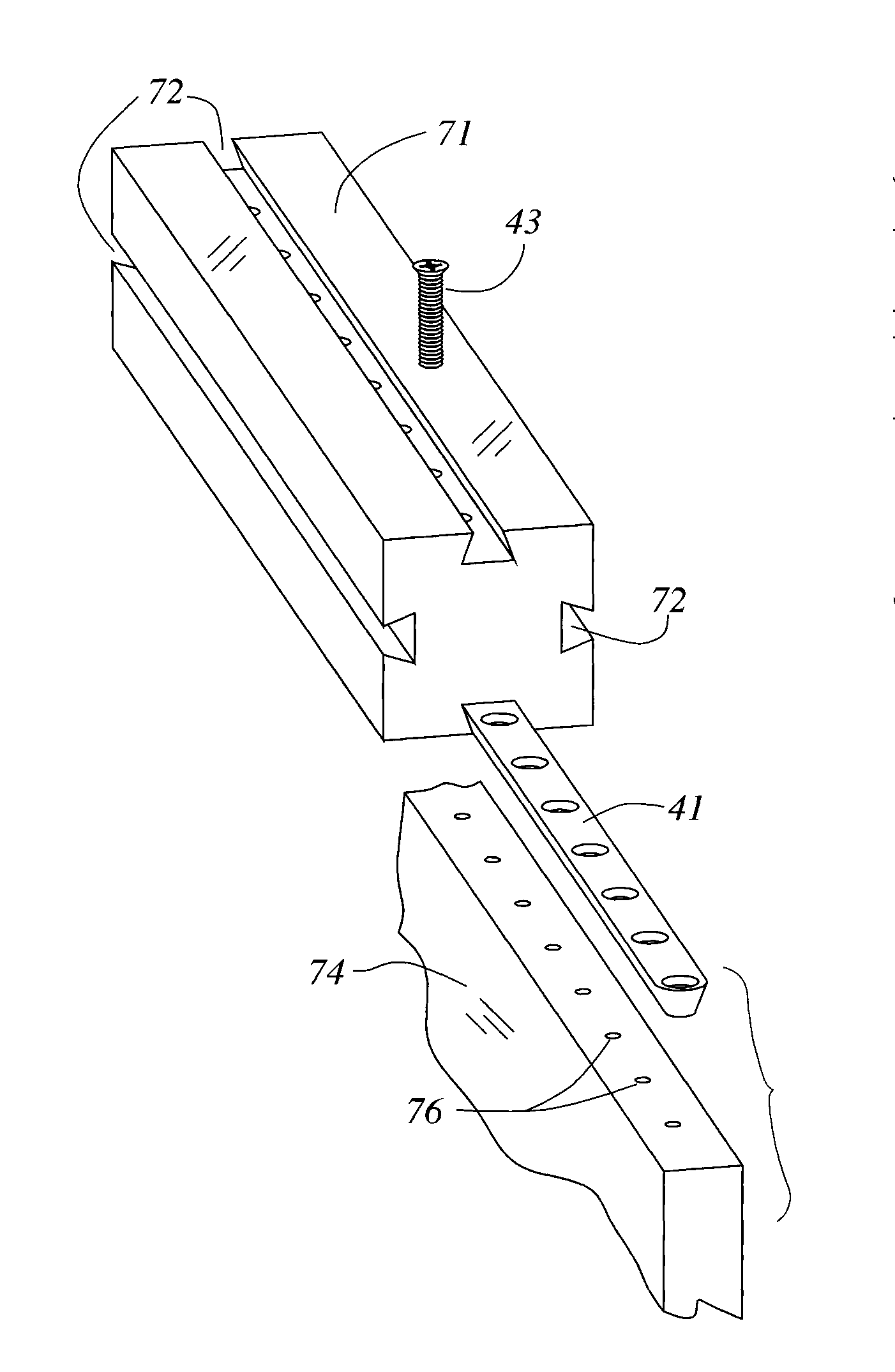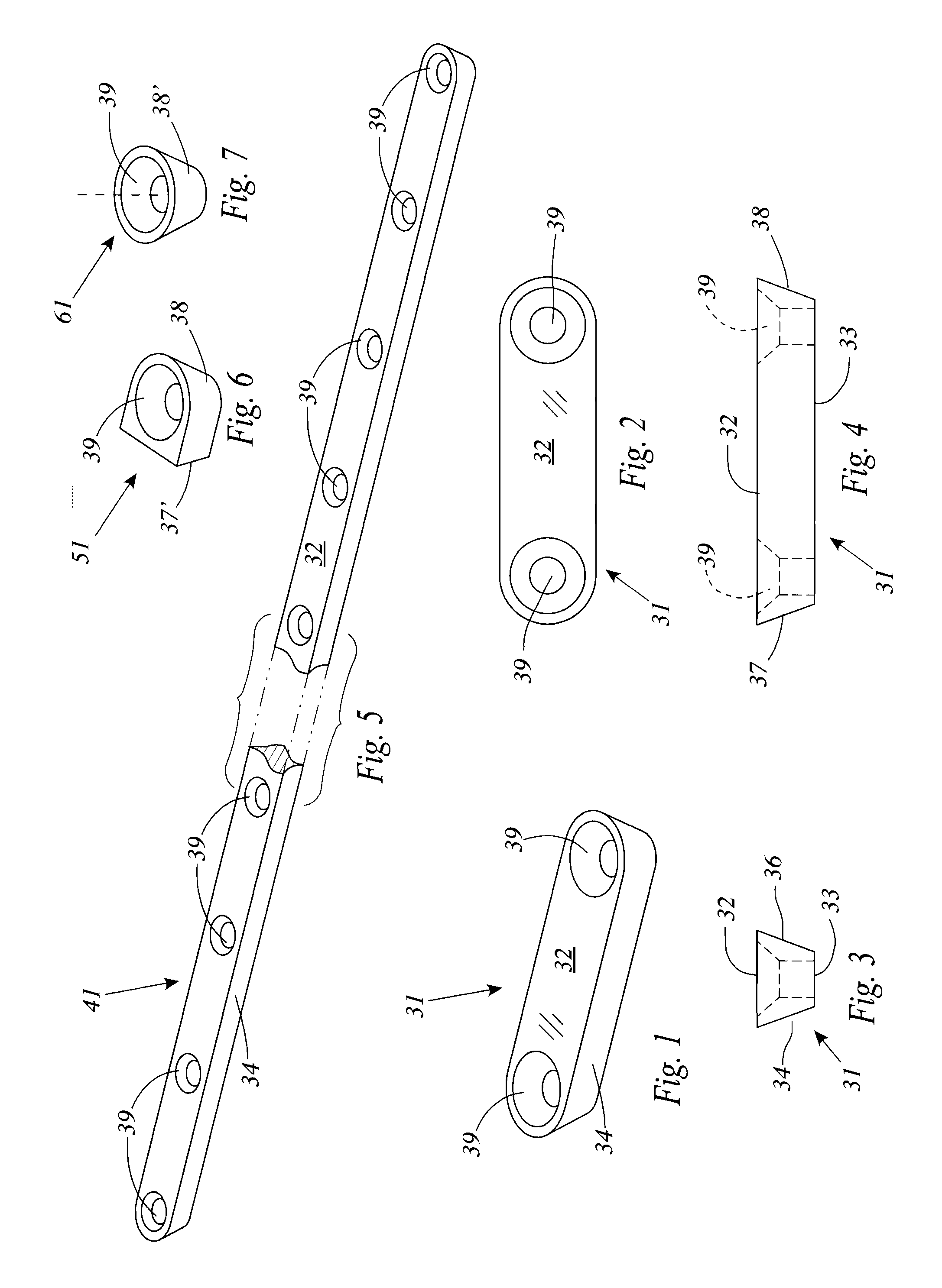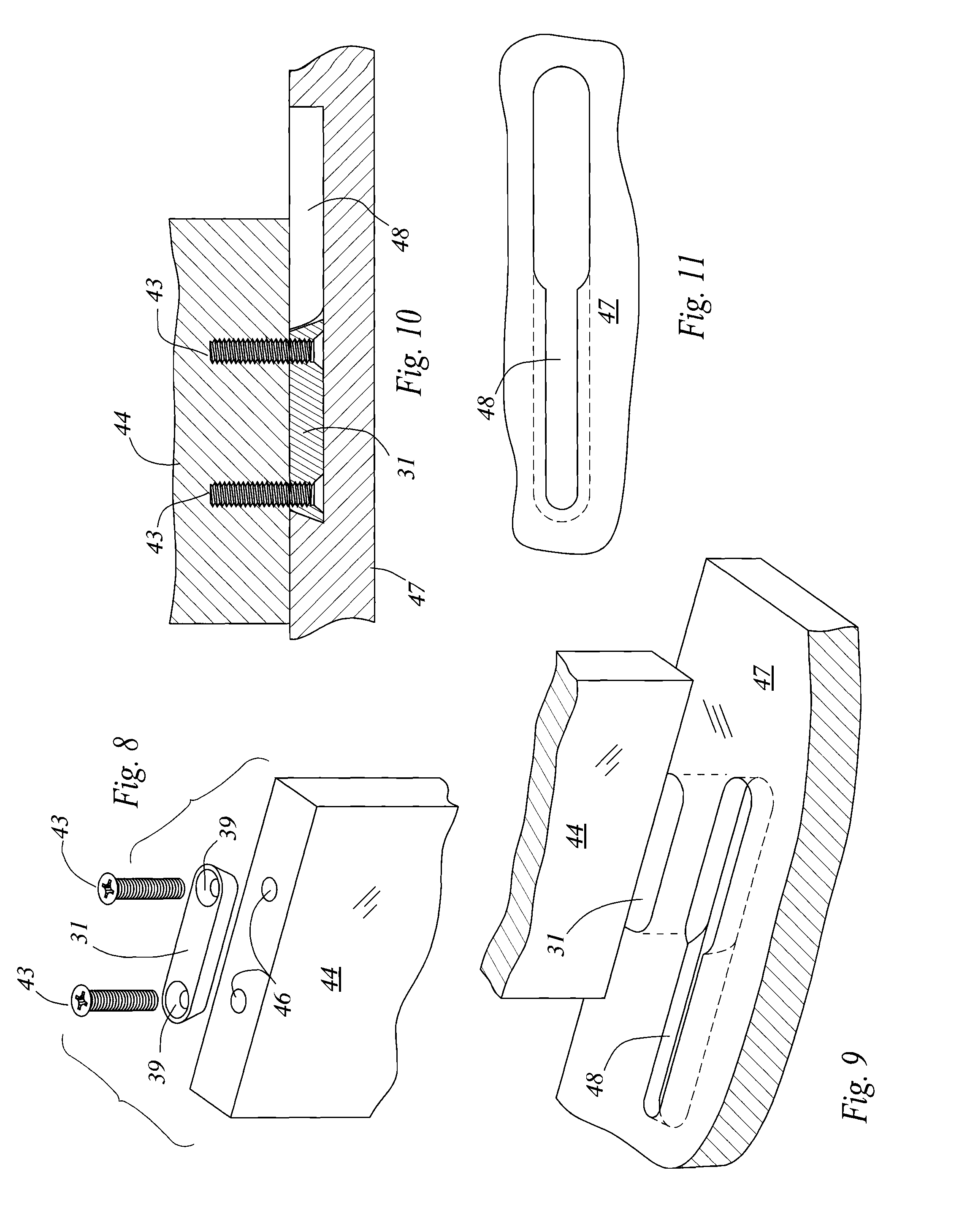Furniture component joining system
a technology of furniture components and joining systems, which is applied in the direction of rod connections, dismountable cabinets, couplings, etc., can solve the problems of inconvenient use of dovetail joints, continual problems with mortise and tenon fit, and thinner stock pieces end up having shallow mortise grooves. , to achieve the effect of easy disassembly, easy modification, and high resistance to moistur
- Summary
- Abstract
- Description
- Claims
- Application Information
AI Technical Summary
Benefits of technology
Problems solved by technology
Method used
Image
Examples
Embodiment Construction
[0036]The present invention generally comprises a modified dovetail joining system having hardware components that embody the male and / or female components of the dovetail joint, and these components may be secured to structural components using standard screws. Thus a great deal of woodworking time and machining is eliminated, and in addition the secure dovetail joint formed by the invention may be disassembled and reassembled without degrading the structural components or the dovetail fittings.
[0037]With regard to FIGS. 1-4, one embodiment of the invention is a male dovetail fitting 31, comprised of a solid bar having parallel top and bottom surfaces 32 and 33, and obtuse side surfaces 34 and 36, and end surfaces 37 and 38. Note that the side and end surfaces are dimensioned and inclined at a standard dovetail angle, such as ½ inch, 14° dovetail that is widely used in the prior art. The side surfaces and end surfaces are fully radiused at their junctures, forming rounded ends that...
PUM
 Login to View More
Login to View More Abstract
Description
Claims
Application Information
 Login to View More
Login to View More - R&D
- Intellectual Property
- Life Sciences
- Materials
- Tech Scout
- Unparalleled Data Quality
- Higher Quality Content
- 60% Fewer Hallucinations
Browse by: Latest US Patents, China's latest patents, Technical Efficacy Thesaurus, Application Domain, Technology Topic, Popular Technical Reports.
© 2025 PatSnap. All rights reserved.Legal|Privacy policy|Modern Slavery Act Transparency Statement|Sitemap|About US| Contact US: help@patsnap.com



